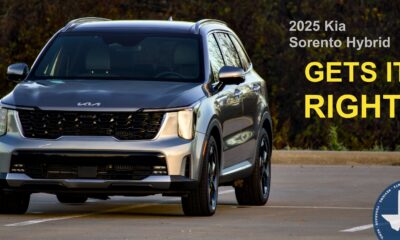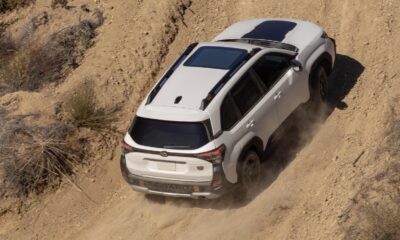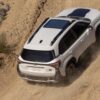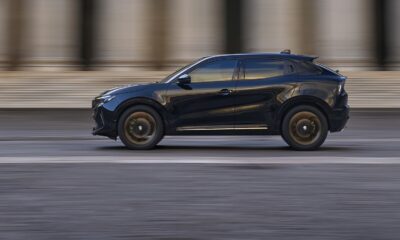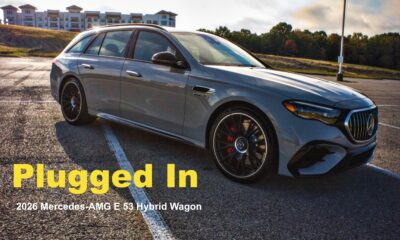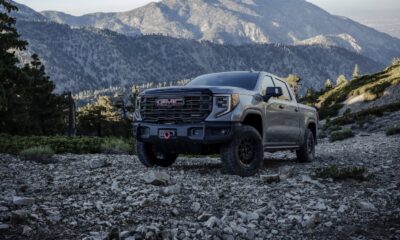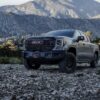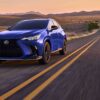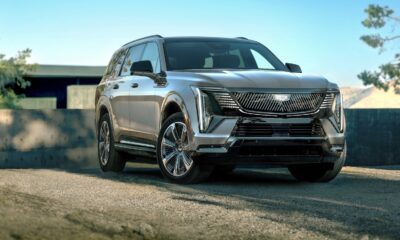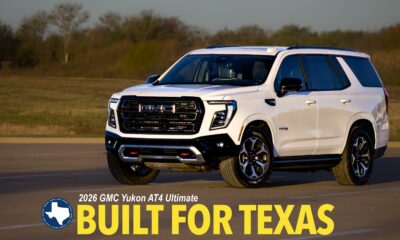Car Reviews
2025 Toyota 4Runner – THE CLASS OF ITS CLASS
2025 Toyota 4Runner
THE CLASS OF ITS CLASS
LITTLE MISSOURI RIVER, Ark.—Trying to wrap my head around the idea of a $70,000 Toyota 4Runner, I kept returning to this simple observation about the stunningly competent, confident, and upscale Trailhunter trim: it is the Defender that Land Rover wishes it could build.
To be sure, a perfectly solid and dependable 4Runner SR5, one of those trucks that hang around a family for multiple generations and become a central figure of familial lore, starts around $43,000, delivery included. Four-wheel drive will add $2,000. Let us save you the time and money of shopping for prices. Toyota dealers are selling everything they can get their hands on these days.
The new 4Runner comes in16 different trim and package choices and prices climb quickly. A TRD Sport starts at over $50,000, a TRD Sport Premium more than $55,000, and top-of-the-line Trailhunter and TRD Pro powered by a twin-turbo I4 with a hybrid cranking out 326 hp and 465 lb.-ft. of torque both start at $66,900
Add in a $1,450 delivery fee, a $275 digital key fee, cargo lights, and fees for things that ought to be standard, like floor mats and cargo cover, and our Trailhunter tester weighed in at $69,893, or about $6,000 less than a Land Rover Defender. The Trailhunter was built in Japan using Toyota parts, while the Defender was assembled in Slovakia with Range Rover parts. Which one do you trust more when rock crawling 25 miles from the nearest pavement?
RICH HISTORY: The latest 4Runner marks the first significant redesign in 15 years. It emerges from the shadow of its much-loved but antiquated predecessor. It is built on a modern platform and equipped with contemporary technology and powertrain options, blending its historic toughness with modern refinement.
It squares off against formidable rivals like the Ford Bronco, Jeep Wrangler, the aforementioned Defender and the more pavement-focused Honda Passport.
The new model swaps soft curves for a chiseled, aggressive look heavily inspired by its new Tacoma stablemate. The design is unapologetically rugged, featuring a high beltline, muscular fender flares, and a commanding front fascia. This fresh look aligns perfectly with Toyota’s current truck design language, presenting a unified and rugged family appearance.
Heritage design cues return, delighting long-time fans. The iconic power-down rear window remains a staple, and the “wrap-over” quarter windows, a nod to the first and second-generation models, make a welcome comeback.
Functionally, the vehicle’s bodywork keeps off-road clearance in mind, featuring improved approach and departure angles. Compared to its rivals, the 4Runner’s design strikes a compelling balance. Car and Driver notes that “its chunky, Tonka-truck styling gives it a distinctly different vibe from the retro Ford Bronco and Jeep Wrangler.”
It feels more modern than the purposefully old-school American duo but less sleek and luxurious than the premium Land Rover Defender.
CABIN COMFORTS: Stepping inside the 2025 4Runner reveals the most dramatic improvements. The cabin replaces the dated layout of the previous generation with a modern, driver-focused cockpit.
A horizontal dashboard creates a sense of spaciousness, dominated by a large, centrally mounted touchscreen. Materials are a mix of durable, high-quality plastics and soft-touch surfaces where it counts.
While it may not feel as premium as a Land Rover Defender, the build quality is solid, prioritizing practicality and longevity, a Toyota hallmark. MotorTrend observes that the “interior is a massive leap forward, with a modern design and improved materials that make the old 4Runner’s cabin feel ancient.”
Passenger space is improved thanks to a longer wheelbase. Front and second-row occupants will find ample head and legroom. An optional third row is available, though it remains best suited for children or occasional use, a common trait in this class.
Cargo capacity is generous, and clever storage solutions dot the cabin. Technology transforms the overall ambiance; a digital instrument cluster and large infotainment screen create a tech-forward feel that was sorely lacking before, making the cabin far more pleasant for daily commutes and long road trips.
MODERN TECH: The 2025 4Runner finally enters the modern era of in-car tech. A standard 8.0-inch touchscreen is a considerable upgrade, while a massive 14.0-inch display is available on higher trims.
Both run Toyota’s latest infotainment software, which is a massive improvement – its intuitive, responsive, and features crisp graphics. Wireless Apple CarPlay and Android Auto are standard, a crucial convenience for today’s driver. We noted very few hiccups while using Apple CarPlay and Google Maps to navigate rarely traveled mountain roads.
Crucially, every 4Runner comes standard with Toyota Safety Sense 3.0. This suite of driver-assistance features includes Pre-Collision System with Pedestrian Detection, Lane Departure Alert with Steering Assist, Full-Speed Range Dynamic Radar Cruise Control, and Proactive Driving Assist.
This comprehensive standard package is a significant advantage, particularly when compared to competitors charging extra for similar features. The system also allows for over-the-air (OTA) updates.
BUILT FOR DRIVING: The asthmatic V6 of the old 4Runner is gone, replaced by two more compelling powertrains. The standard engine is a turbocharged 2.4-liter four-cylinder, the i-FORCE, producing a healthy 278 horsepower and 317 lb-ft of torque.
The main event, however, is the i-FORCE MAX hybrid. This powertrain pairs the same 2.4-liter turbo engine with an electric motor, delivering a stout 326 horsepower and an impressive 465 lb-ft of torque, allowing the 4Runner to tow 6,000 lbs.
This hybrid system transforms the 4Runner’s character. Acceleration is brisk and effortless, with the electric motor providing instant torque that makes the vehicle feel responsive both from a stop and during highway passing maneuvers. Mated to an 8-speed automatic transmission, power delivery is smooth and decisive.
A new TNGA-F body-on-frame platform, shared with the Tundra and Sequoia, provides much improved ride quality. While still a rugged, body-on-frame SUV, it handles road imperfections with more composure and exhibits less body roll in corners than its predecessor, making it a more pleasant daily driver. This is due in no small part to replacing rear leaf springs with coils for a more car-like ride.
What stands out, however, is how quiet the cabin is when the vehicle is at speed. Unlike the Wrangler (which can be punishing) and the Bronco, whose claim to fame is that it is less punishing than the Wrangler, the 4Runner eats up highway miles in a setting quiet enough for conversations that welcome passengers in all three rows.
Off-road, the 4Runner is more capable than ever. It retains a solid rear axle, but new features like a Stabilizer Bar Disconnect Mechanism enhance wheel articulation. The hybrid powertrain’s low-end torque is a significant asset for technical rock crawling.
Trailhunter models come with an innovative, 360-degree camera system for keeping an eye on the trail, multi-terrain select with high and low-gear settings, downhill assist control, locking rear differential, stabilizer disconnect, and Old Man Emu’s off-road-specific suspension, offering 2.5-inch forged monotube shocks featuring rear external piggyback remote reservoirs. These Australian-designed dampers are purpose-built for overlanding.
Toyota’s hybrid systems have a long-standing and well-deserved reputation for bulletproof reliability. The driving experience is now a blend of utilitarian toughness and newfound refinement—a combination its competitors struggle to match.
The old 4Runner delivered 16 mpg, less around town. The EPA rates the new one to average 22 mpg. In a week that contained heavy doses of rock crawling and running through rocky, winding mountain roads, we got 18.4 mpg.
VALUE: Stellar reliability and class-leading resale value are 4Runner hallmarks; every indication is that the new generation will continue that legacy. While a top-tier TRD Pro or Platinum will command a premium price, a mid-range TRD Off-Road likely represents the sweet spot, offering immense capability and desirable features without the highest price tag.
BOTTOM LINE: The 2025 Toyota 4Runner is a masterful reinvention of a beloved icon. It successfully walks the tightrope of modernization without losing the core identity that cultivated its loyal following.
For the buyer seeking a truly capable, do-anything, go-anywhere SUV, the 4Runner is a top-tier contender. It offers a more reliable and well-rounded package than a Wrangler or Bronco, and has vastly more off-road credibility than a Honda Passport.
For those who value proven long-term durability and the promise of adventure, the 2025 Toyota 4Runner is not just an excellent choice…it’s the benchmark.






















